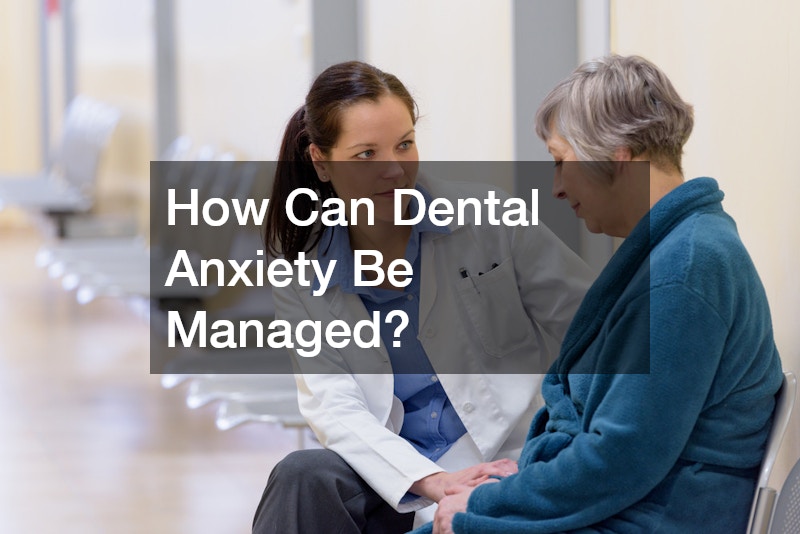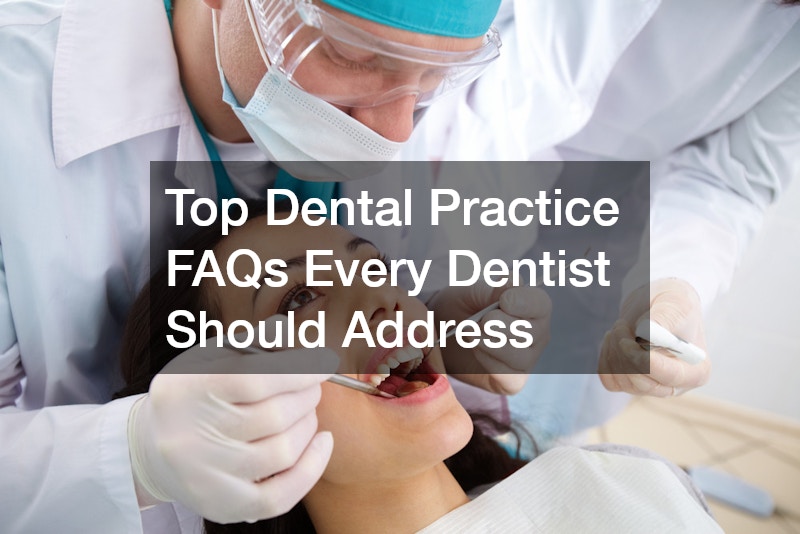
Every patient who walks into a dental office has questions, and how those questions are answered can shape their overall experience. From simple inquiries about oral hygiene to concerns about cosmetic dentistry, understanding the most common questions helps build stronger relationships with patients. This article explores the top frequently asked questions that general dentists practices should be ready to answer. By doing so, dental professionals can provide reassurance and strengthen the reputation of their clinic. Whether serving families, individuals seeking advanced dental services, or patients looking to grow their knowledge of available treatments, addressing these topics enhances trust and satisfaction.
What Are the Best Practices for Maintaining Oral Health?

Daily Oral Hygiene Steps
The foundation of oral health begins with daily habits. Patients should be encouraged to brush at least twice a day using fluoride toothpaste and a soft-bristled toothbrush. Proper technique prevents plaque buildup and protects enamel. Flossing once a day is equally important, as it removes food particles and bacteria that brushing alone may miss. A family dentist can demonstrate these techniques during appointments to ensure that patients practice them correctly at home.
Importance of Regular Dental Check-Ups
Even the most diligent oral hygiene routines benefit from professional oversight. Regular visits to a clinic provide opportunities for thorough cleanings, which remove tartar that cannot be eliminated by brushing alone. These visits also allow dentists to identify potential issues early, when they are easier to treat.
Dietary Recommendations for Oral Health
Diet plays a significant role in oral health, and patients often overlook how their daily choices affect their teeth and gums. Foods high in sugar and acids, such as soda and candy, promote decay, while calcium-rich foods strengthen enamel. Fresh fruits and vegetables help stimulate saliva flow, which naturally protects teeth.
Recognizing Signs of Dental Issues
Many patients wait until pain develops before visiting their dental office. However, educating them on early warning signs is critical. Symptoms such as gum bleeding, persistent bad breath, sensitivity to hot or cold, or visible changes in tooth color can indicate underlying problems. By teaching patients to recognize these signs early, dentists empower them to seek timely care and prevent minor issues from escalating.
Use of Dental Products
The marketplace is filled with dental products, from whitening toothpaste to specialized mouth rinses, and patients often feel overwhelmed by the choices. Dentists should guide patients in selecting the right products based on their unique needs. Recommending fluoride rinses for cavity prevention, desensitizing toothpaste for sensitive teeth, or professional-grade whitening options ensures that patients invest in products that truly support their oral health goals.
How Often Should You Visit a Dentist?
Recommended Frequency for Dental Visits
Most patients benefit from seeing their family dentist every six months. These visits allow for professional cleanings, comprehensive exams, and ongoing monitoring of oral health. For patients with specific risk factors, such as a history of gum disease or frequent cavities, visits may need to be scheduled more frequently. Consistency ensures that small problems are caught early, saving patients discomfort and expense.
Factors Influencing Visit Frequency
Visit frequency depends on several factors, including age, medical history, and lifestyle habits. Smokers, individuals with diabetes, and those with weakened immune systems often require additional care. Similarly, children in their early years may need closer monitoring as their teeth develop. By personalizing schedules, a clinic demonstrates its commitment to each patient’s unique needs.
Understanding Check-Ups vs. Cleanings
Patients sometimes confuse dental check-ups with cleanings, but both play essential roles. A cleaning removes tartar and plaque, while a check-up involves a thorough examination of the teeth, gums, and jaw. X-rays may be recommended to identify issues not visible to the eye. Clarifying the distinction ensures patients understand the importance of both parts of their visit.
Signs You Need an Extra Visit
Unplanned visits may be necessary if patients experience specific symptoms. Pain when chewing, sudden tooth sensitivity, bleeding gums, or loose fillings all warrant immediate attention. Educating patients to act quickly in these cases improves outcomes and prevents complications.
Benefits of Regular Visits
Routine visits to a dental office do more than maintain oral health—they build trust between patients and their dentist. Preventive care reduces the need for invasive treatments, enhances confidence in one’s smile, and contributes to overall well-being. Patients who keep regular appointments often report higher satisfaction with their care.
What Should I Expect During a Dental Check-Up?
Initial Oral Examination
The check-up begins with a comprehensive examination of the teeth, gums, and mouth. Dentists look for cavities, gum inflammation, and other signs of oral health issues. They also review medical history to determine if underlying conditions may affect oral health. This initial step ensures that treatment recommendations are accurate and tailored.
Common Dental Procedures Performed
Beyond examinations, check-ups often include professional cleanings and fluoride treatments. Patients may also receive sealants for cavity prevention or adjustments to existing dental appliances. These services highlight the importance of preventive dental services and reinforce the value of maintaining regular appointments.
Dental X-Rays: When and Why
X-rays provide critical insights that visual exams cannot capture. They detect cavities between teeth, monitor bone health, and help plan procedures like dental implants. Dentists should explain why X-rays are necessary and address concerns about safety, reassuring patients that modern techniques minimize exposure.
Addressing Patient Concerns
Open communication is a hallmark of general dentists practices. Many patients arrive with questions or anxieties, and acknowledging these concerns fosters trust. Whether explaining cosmetic dentistry options or reviewing restorative treatments, dentists who prioritize communication enhance the overall experience.
Customized Care Plans
Every patient has unique needs, and personalized care plans help address them effectively. These plans may include cosmetic treatments like teeth whitening, restorative options such as dentures, or preventive measures tailored to lifestyle. Patients value knowing that their dentist considers their individual goals and preferences.
How Do I Choose the Right Dentist for Me?

Researching Dentists’ Credentials
Choosing the right provider begins with understanding their qualifications. Patients should look for proper licensing, education, and experience in relevant specialties. Highlighting credentials builds credibility and ensures patients feel confident in their care.
Importance of Dentist-Patient Communication
Trust grows when dentists communicate clearly and listen to their patients. Effective communication allows for better explanations of procedures, options, and aftercare. Patients should feel comfortable asking questions and confident that their dentist prioritizes their comfort.
Evaluating Reviews and Testimonials
Reviews provide valuable insight into the experiences of other patients. Encouraging prospective patients to read testimonials helps them evaluate how a dental office operates. Positive reviews about comfort, professionalism, and results reinforce trust in a clinic.
Considering Location and Office Hours
Convenience plays a significant role in patient decision-making. A clinic located near home, work, or school with flexible office hours increases accessibility. Patients are more likely to commit to regular visits when scheduling is convenient.
Understanding Available Services
From preventive care to cosmetic dentistry, patients should consider the range of dental services offered. A family dentist who provides comprehensive care, including orthodontics, implants, and teeth whitening, simplifies long-term treatment planning. Highlighting these offerings helps patients select the best fit for their needs.
What Are the Signs of Gum Disease?
Early Symptoms of Gum Issues
Early gum disease, or gingivitis, often presents as redness, swelling, or bleeding during brushing. Patients may dismiss these symptoms, but dentists should stress that they are warning signs requiring immediate attention.
Progression From Gingivitis to Periodontitis
If left untreated, gingivitis can progress to periodontitis, where gum tissue pulls away from teeth and bone loss occurs. This stage often leads to tooth mobility and eventual loss. Educating patients on progression emphasizes the importance of early intervention.
Preventive Measures for Gum Health
Brushing, flossing, and regular professional cleanings remain the best defense against gum disease. Dentists should also encourage patients to avoid smoking, which significantly increases the risk of gum issues.
Treatments Available for Gum Disease
Treatments range from non-surgical scaling and root planing to surgical interventions for advanced cases. By explaining these options clearly, a dental office reassures patients that solutions are available at every stage.
Lifestyle Changes to Prevent Gum Disease
Encouraging a healthy diet, proper hydration, and stress management helps improve gum health. Simple lifestyle changes can complement professional treatments, reducing recurrence and improving long-term outcomes.
Are Dental X-Rays Safe?
Understanding Dental X-Ray Technology
Modern X-ray technology uses minimal radiation, making it a safe diagnostic tool. Dentists should explain how these advancements reduce exposure while delivering detailed results.
Differences Between Types of X-Rays
Intraoral, panoramic, and 3D imaging each serve unique purposes. Understanding these differences helps patients feel more comfortable when X-rays are recommended.
Radiation Exposure Concerns
Radiation exposure from dental X-rays is extremely low compared to everyday sources, such as natural background radiation. Clarifying this point reassures patients who may hesitate due to safety concerns.
Safety Precautions Taken by Dental Practices
Protective measures, including lead aprons and thyroid collars, further minimize exposure. By explaining these safeguards, dentists highlight their commitment to patient well-being.
Frequency of Dental X-Rays
The frequency of X-rays depends on age, oral health, and treatment history. While some patients require annual imaging, others may need them less frequently. Dentists should tailor recommendations to each individual’s needs.
What Are the Options for Teeth Whitening?
Over-the-Counter vs. Professional Whitening
Patients often wonder whether store-bought products can match professional results. Over-the-counter options may lighten stains but rarely achieve the same brightness or longevity as treatments performed in a clinic. Professional teeth whitening provides noticeable, longer-lasting results under expert supervision.
Understanding Whitening Agents
Most whitening agents contain hydrogen peroxide or carbamide peroxide, which break down stains. Professional treatments use higher concentrations for faster, more effective outcomes while minimizing risks.
Long-Term Care After Whitening
Maintaining results requires consistent oral hygiene and avoiding stain-causing foods like coffee and red wine. Regular touch-ups at a dental office also help preserve brightness.
Potential Sensitivity Issues
Tooth sensitivity may occur after whitening, but this side effect is usually temporary. Dentists can recommend desensitizing toothpaste or adjust treatment intensity to reduce discomfort.
Effectiveness of Different Methods
From whitening toothpaste to advanced in-office procedures, effectiveness varies widely. By explaining options clearly, dentists help patients choose the most suitable method for their goals.
How Can I Prevent Cavities?

Role of Fluoride in Cavity Prevention
Fluoride strengthens enamel, making teeth more resistant to decay. Patients should use fluoride toothpaste daily and may benefit from professional fluoride treatments during check-ups.
Best Practices for Brushing and Flossing
Brushing twice a day and flossing daily remain the most effective preventive measures. Reinforcing proper technique during visits ensures patients practice these habits correctly.
Identifying Foods and Drinks to Avoid
Sugary snacks, sticky candies, and acidic beverages contribute to decay. Recommending healthier alternatives helps patients protect their teeth without feeling deprived.
Sealants and Other Preventive Treatments
Sealants provide an extra layer of protection, especially for children’s molars. Combined with fluoride, sealants offer powerful defense against cavities.
Encouraging Preventive Check-Ups
Routine preventive visits reduce the risk of cavities and allow for early detection. Patients who schedule regular appointments with their family dentist are more likely to maintain lifelong oral health.
What Are My Options If I Have Missing Teeth?
Overview of Dental Implants
Dental implants are a long-lasting solution for missing teeth, involving a titanium post placed into the jawbone topped with a natural-looking crown. They restore both function and appearance, making them a popular choice for patients seeking permanence.
Bridges and Partials as Alternatives
For patients not ready for implants, bridges and partial dentures provide effective alternatives. These options replace missing teeth while maintaining comfort and affordability.
Considerations for Dentures
Dentures remain a reliable solution, particularly for patients missing several teeth. Modern dentures are more comfortable and natural-looking than in the past, offering improved function and aesthetics.
Innovative Alternatives in Dental Technology
Advances in cosmetic dentistry continue to expand options, such as mini implants or implant-supported dentures. Discussing these innovations highlights how dental services evolve to meet patient needs.
Long-Term Care for Dental Replacements
Regardless of the option chosen, proper care is essential. Regular cleaning, routine check-ups, and healthy habits ensure longevity and comfort with replacements.
How Can Dental Anxiety Be Managed?

Understanding the Causes of Dental Anxiety
Many patients feel anxious due to past negative experiences, fear of pain, or uncertainty about procedures. Dentists should acknowledge these feelings to create a supportive environment.
Communication Techniques to Ease Anxiety
Open dialogue helps patients express concerns and feel heard. Explaining procedures step by step reduces fear of the unknown, while reassurance builds trust.
Sedation Options for Nervous Patients
Sedation dentistry offers solutions ranging from mild relaxants to deeper sedation for complex procedures. Discussing these options allows patients to feel more in control of their care.
Creating a Comfortable Office Environment
A welcoming dental office atmosphere eases patient tension. Comfortable seating, calming décor, and friendly staff interactions make the clinic feel less intimidating.
Every question a patient asks offers an opportunity to educate and build trust. By addressing common concerns about oral hygiene, cosmetic dentistry, preventive care, and restorative options such as dental implants and dentures, general dentists practices provide a higher standard of care. A family dentist or clinic that consistently offers clarity and compassion creates a positive environment where patients feel valued. In doing so, dental professionals not only strengthen relationships but also grow your orthodontic practice, ensuring that patients return for lifelong care with confidence in both their health and their smile.
